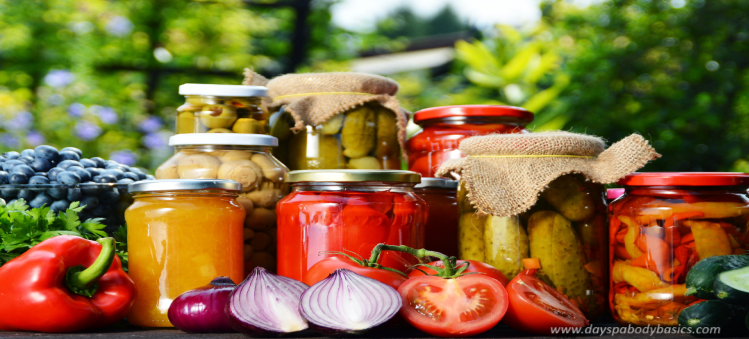
Crop Insurance Market by Type (Crop Yield Insurance, and Crop Revenue Insurance) by Application (Multi-peril Crop Insurance (MPCI), Crop-hail Insurance, Livestock Insurance, and Others), by Distribution Channel (Banks, Insurance Companies, Brokers/Agents and Others) – Global Opportunity Analysis and Industry Forecast, 2023–2030
Industry: Retail and Consumer | Publish Date: 13-Apr-2023 | No of Pages: 213 | No. of Tables: 150 | No. of Figures: 130 | Format: PDF | Report Code : N/A
Market Overview
The global Crop Insurance Market size was valued at USD 37.91 billion in 2022 and is expected to reach USD 59.89 billion by 2030, at a CAGR of 6.1% from 2023 to 2030.
Crop insurance is a comprehensive, yield-based policy designed to cover losses incurred by farmers as a result of production problems. Farmers can purchase this insurance to protect their growing crops from loss or damage resulting from natural disasters such as hail, drought, flood, insects, and the loss of revenue due to falling agricultural commodities. A crop insurance plan stabilizes agricultural production and minimizes the adverse effects it has on farmers' livelihoods. Given the current state of agriculture, crop insurance has become a necessity.
Favorable Government Initiatives to Augment the Market Growth
The agricultural sector is one of the most important industries in various countries including India, the US, the Philippines, and others, but development is being hindered by the increasing risk associated with agriculture due to decreased arable land, climate change, and high labor costs. Therefore, there are numerous government initiatives aimed at boosting the agriculture industry, which is conducive to market expansion.
The growth of the crop insurance sector is being fueled by the promotion of the economic stability of agriculture through crop insurance to increase farmer knowledge and help them establish insurance. For instance, the governments of Canada and Saskatchewan recently announced improvements to the 2021 Crop Insurance Program in order to provide farmers with additional coverage and guarantee that they have the risk management resources necessary for their expansion and stability. These efforts are helping to expand the crop insurance industry.
Increasing Unusual Climatic Events to Fuel Crop Insurance Demand
In response to an increasing number of unusual climatic phenomena, small-scale farmers, as well as big and minor stakeholders in the agriculture industry, have opted for insurance to protect themselves against probable losses and failed harvests. Crop insurance helps farmers minimize the financial and crop loss risks they face. These risks are caused by the rising frequency of unfavorable meteorological conditions, such as rainfall, drought, temperature, frost, and humidity. Moreover, there are various digital initiatives being implemented to facilitate the prediction of weather and climatic conditions, data-storage for crops and micro-level information about the land for harvesting crops and reduce uncertain risks. These factors are expected to penetrate the crop insurance industry globally.
Lack Of Awareness of Crop Insurance and Less Availability of Arable Land Hinders Growth
A lack of awareness about crop insurance products and schemes may hamper the crop insurance industry growth. The farmers are illiterate and lack information about crop insurance, policies and claim benefits. Additional significant factors impeding agricultural activities and having a limited impact on market expansion include the decline in arable land and the acquisition of land from the farmers owing to rapid urbanization, the rise in smart city projects, and the number of commercial and residential projects being built, particularly in developing countries.
Growth In Crop Insurance Product Line to Boost Market Growth in Future
The expansion of the current crop insurance product line is anticipated to present opportunities for market development. The value-added services that crop insurance providers provide to their customers and the creation of new product and service offerings through the application of new technologies and partnership agreements greatly contribute to the expansion of the worldwide market.
The application of technologies can assist in registering the information and location of farmers, as well as in collecting premiums and paying claims. Insurers can use technologies such as AI, satellites, and remote sensing data to expand their current company operations and improve the smooth claims procedure and avoid mutual claim settlement processes. Hence, expansion of the current product line and an increase in partnerships and agreements are anticipated that crop insurance providers will have attractive prospects in the upcoming years.
North America Currently Dominates Crop Insurance the Market
Agriculture is a significant industry in North America. In the central lowlands of the continent, Canada and the USA are two exceptionally productive agricultural nations. In this region, only 12% of the continent's total surface is suitable for agriculture. However, they produce a lot from their farms. For instance, wheat and corn are well-known products of prairie grasslands.
Monoculture, the practice of growing one crop for a long period of time in a particular region, poses a threat to agriculture in the tropical and subtropical regions of North America.Monoculture is a risky method of farming due to nutrient loss and the potential for crop disease. This is not the case when a variety of crops are planted on the same plot.
The governments in this region are consistently protecting production through subsidies and agricultural insurance programs. These programs boost the productivity and competitiveness of the agri-food sector in the North American region and mitigate uncertainties in agri-food activities. For instance, AgriSompo North America provides best-in-class agricultural risk solutions through a national network of independently owned agents. Moreover, several regions of the country such as the US and Canada are affected by severe drought conditions, which negatively impact the agri businesses. These factors are responsible for the high demand for crop insurance in this region.
Asia-Pacific Witnesses Substantial Growth in the Global Crop Insurance Market Share
Asia-Pacific is the world's leading producer of agricultural products, and the industry is fundamental to the region's economy since it accounts for more than half of the region's land area and employs one-fifth of all workforce. China and India are the leading producers of food in the Asia-Pacific region owing to their vast arable land and large population, which has increased the demand for agricultural produce.
In spite of recent significant increases in production, Asia still produces lower yields than most other regions due to resource depletion, deteriorating soil quality, poor logistics, and ineffective farming practices and land use. In addition, severe climatic conditions including flood, typhoon and heavy rain in this region, particularly in countries such as China, India, and Japan are responsible for considerably bad harvest and financial crisis of the farmers. There are several countries in this region that have adopted various crop insurance programs to support the farmers and practice innovative methods and technologies to increase farm produce. Moreover, the insurers offer a variety of pilot insurance programs to support sector development and compensate consumers for potential losses. These reasons are attributed to the high demand for crop insurance among the farmers in the countries of the Asia-Pacific region.
Competitive Landscape
The crop insurance market report includes several market players such as ADM, Sompo Holdings Inc, AXA XL, Chubb Limited, HDFC Ergo, Munich Re Group, Odyssey Group, QBE Insurance Group Limited, Tokio Marine Holdings, Inc, and Zurich Insurance Group. These market players are adopting business expansion strategies across various regions to maintain their dominance in the global agricultural insurance market.
For instance, in October 2022, HDFC ERGO launched a technology-backed farm yield insurance policy for farmers. This is a first-of-its-kind insurance solution, where a satellite-based index is used to provide localized farm-level coverage. The product is targeted at farmers under corporate/farm input company (FIC) contracts and is valid for food, oilseed, commercial or horticulture crops.
In addition, in June 2022, Munich Re Group partnered with Cloud to Street (C2S) and Raincoat to provide the first country-level flood parametric program with local payouts in Colombia. Under the new program, insured farmers will receive loan relief based on the magnitude of floods that hinder their abilities to grow crops or market them. Moreover, in September 2021, Sompo International Holdings Ltd., a wholly-owned subsidiary of Sompo Holdings acquired ARA 1857 S.p.A, an Italian crop insurance company. The acquisition of ARA is another strategic and welcome step in strengthening the company’s presence with new products and capabilities in a key agriculture market.
Crop Insurance Market Key Segments
By Type
-
Crop Yield Insurance
-
Crop Revenue Insurance
By Application
-
Multi-peril Crop Insurance (MPCI)
-
Crop-hail Insurance
-
Livestock Insurance
-
Others
By Distribution Channel
-
Banks
-
Insurance Companies
-
Brokers/Agents
-
Others
By Region
-
North America
-
US
-
Canada
-
Mexico
-
-
Europe
-
Germany
-
France
-
Italy
-
Spain
-
United Kingdom
-
Russia
-
Sweden
-
Rest of Europe
-
-
Asia-Pacific
-
Australia
-
China
-
India
-
Japan
-
South Korea
-
Indonesia
-
Singapore
-
Rest of Asia-Pacific
-
-
RoW
-
UAE
-
Brazil
-
South Africa
-
Israel
-
KSA (Kingdom of Saudi Arabia)
-
Turkey
-
Remaining Countries
-
Report Scope and Segmentation
|
Parameters |
Details |
|
Market Size in 2022 |
USD 37.91 Billion |
|
Revenue Forecast in 2030 |
USD 59.89 Billion |
|
Growth Rate |
CAGR of 6.1% from 2023 to 2030 |
|
Analysis Period |
2022–2030 |
|
Base Year Considered |
2022 |
|
Forecast Period |
2023–2030 |
|
Market Size Estimation |
Billion (USD) |
|
Growth Factors |
Favourable governments’ initiatives to augment the market growth. Increasing unusual climatic events to fuel crop insurance demand. |
|
Countries Covered |
26 |
|
Companies Profiled |
10 |
|
Market Share |
Available for 10 companies |
|
Customization Scope |
Free customization (equivalent up to 80 analysts working hours) after purchase. Addition or alteration to country, regional & segment scope. |
|
Pricing and Purchase Options |
Avail customized purchase options to meet your exact research needs. |
Key Market Players
-
ADM
-
Sompo Holdings Inc
-
AXA XL
-
Chubb Limited
-
HDFC Ergo
-
Munich RE Group
-
Odyssey Group
-
QBE Insurance Group Limited
-
Tokio Marine Holdings, Inc
-
Zurich Insurance Group




 Speak to Our Analyst
Speak to Our Analyst


































